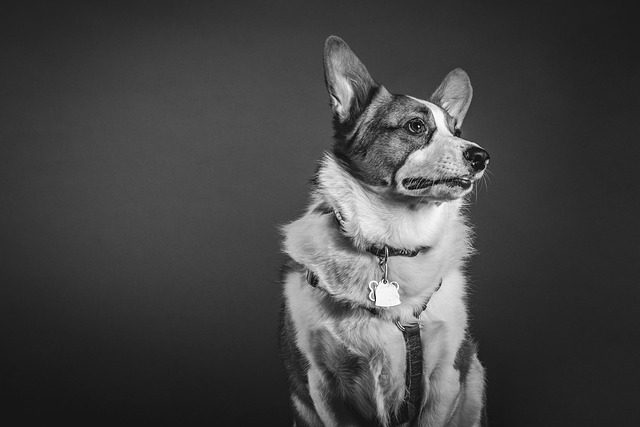
How to treat dogs with skin disease?
You might notice your dog scratching itself nonstop on the couch, or spot red, flaky patches on its belly after a walk in the park.
I sat with my friend Jake on his Phoenix, Arizona patio last July, watching his 3-year-old English Bulldog, Stella, lie flat on the cool tile—tongue lolling, paws splayed, and refusing to move even when he held out her favorite toy. “It’s only 9 a.m., and she’s already overheated. I saw cooling vests online, but do cooling vests work for dogs, or is it just a gimmick?” Jake asked, fanning Stella with a magazine. If you’re a new U.S. dog owner in a hot climate (or even visiting one), the answer is yes—good cooling vests work, but only if you choose the right type and use them correctly, especially for breeds like Bulldogs that struggle to cool down.
To understand why cooling vests work (and when they don’t), let’s break down canine thermoregulation. Dogs only sweat through their paw pads—90% of their cooling comes from panting. When temperatures spike (over 85°F, common in Phoenix summers), panting isn’t enough, and their core temp can rise to dangerous levels (heat stroke starts at 104°F). Jake’s vet explained that effective cooling vests use two science-backed methods: evaporative cooling (water-soaked fabric releases heat as it dries) or phase-change materials (gels that stay cool for hours without rewetting). Cheap “fashion” vests (the ones Jake almost bought) are just thin fabric—they do nothing. Scolding a dog for avoiding a vest (like Jake almost did when Stella backed away from a scratchy one) violates U.S. animal welfare standards; she wasn’t being stubborn—she found it uncomfortable, and comfort is key to making vests work.

Here’s how to make cooling vests work for your dog, using Jake’s success with Stella: First, choose the right vest type (match your lifestyle). Jake picked an evaporative vest (best for outdoor walks) with a soft mesh lining (no scratchy fabric). He avoided gel vests because they’re heavy for Stella’s stocky build. To get her used to it, he laid the vest on the floor with freeze-dried chicken treats on top—positive reinforcement made her sniff it, then wear it for 5 minutes, then 10. By day three, she stood still to have it put on. Second, use it correctly (don’t skip prep). For evaporative vests: Soak it in cool water, wring out excess (dripping makes dogs hate it), and snap it closed. Jake did this before their 7 a.m. walks—Stella’s panting slowed from “rapid and noisy” to “calm” within 10 minutes. For gel vests: Freeze the inserts first (but never put frozen gel directly on skin!). Third, know its limits (it’s not a magic fix). The vest kept Stella cool for 45 minutes—Jake cut walks short after that, rewarding her with a water break and a treat. He never left her in the vest indoors (it traps heat in AC) or used it midday (pavement hits 120°F—even vests can’t beat that). Fourth, check for comfort (adjust often). Stella’s vest had adjustable straps—Jake loosened them when she sat, tightened slightly for walks. If she pawed at it, he took it off, gave a treat, and tried again later—no forcing.
For apartment living, cooling vests fit seamlessly: Hang evaporative vests to dry on a shower rod (no mess!) and store gel inserts in the freezer’s door (saves space). When walking, carry two essentials: biodegradable poop bags (Phoenix fines $250 for leaving messes, even with a cooled pup) and a collapsible water bowl—vests work better when dogs stay hydrated. Practice community etiquette: If another dog pants heavily, mention “Stella’s cooling vest changed our walks!”—new owners in hot climates crave these tips. Never skip vet checkups: Jake’s vet confirmed the vest fit Stella properly (too tight = restricted breathing) and updated her rabies vaccine (mandatory nationwide)—vets can’t advise on heat safety without proof of core shots, and Bulldogs need extra monitoring in heat.
A week later, Jake texted me a video: Stella trotting through the park in her vest, stopping to sniff grass instead of collapsing. Do cooling vests work for dogs? For Stella, they turned miserable summer walks into fun. For your pup, it’s about choosing a comfortable, effective vest, using positive reinforcement to build acceptance, and pairing it with smart heat safety. Vests aren’t a replacement for shade and water—but they’re a lifesaver when you need to be outside.

You might notice your dog scratching itself nonstop on the couch, or spot red, flaky patches on its belly after a walk in the park.

I sat with my friend Jake on his Phoenix, Arizona patio last July, watching his 3-year-old English Bulldog, Stella, lie flat on the cool tile—tongue lolling, paws splayed

I sat with my friend Lila in her Chicago apartment last weekend, surrounded by grooming tools—slicker brush, rubber curry comb, and a half-empty bottle of shampoo

It’s a moment that might make any dog owner’s heart skip a beat: finding a tick attached to your dog’s eyelid. Yes, as unsettling as it sounds, ticks can and do latch onto this delicate area.

Most pet parents notice their dog’s wag or bark first—but their breathing tells a quiet, important story too. Catching respiratory issues early starts with knowing what’s “normal” for your pup, and spotting small shifts that might slip by.

I sat with my friend Zoe in her Denver apartment last week, watching her 18-month-old Pug, Gus, rub his face raw on the carpet—his eyes watery, paws pink from licking